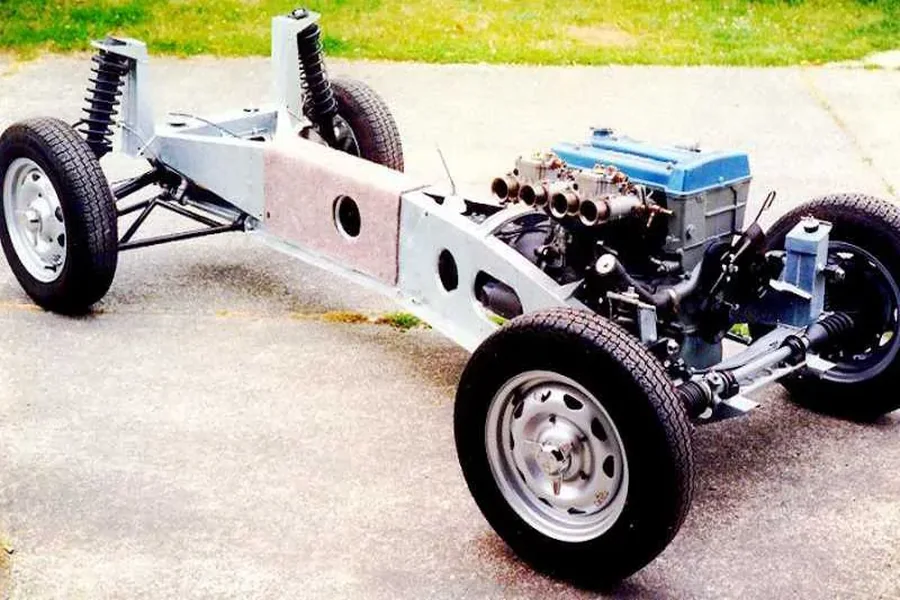When discussing the fundamentals of vehicle design and performance, many people focus on engines, tires, or advanced electronics. While these components are undeniably important, one aspect often overlooked is the chassis — the true backbone of your vehicle. A well-designed and robust chassis is essential for safety, performance, comfort, and longevity. In this article, we’ll explore what a chassis is, its critical functions, and why investing in a strong chassis is crucial for every vehicle.
What is a Chassis?
The chassis is the structural framework of a vehicle that supports all its key components, including the engine, transmission, suspension, wheels, and body. Think of it as the skeleton of your car: just as a human skeleton provides structure and stability, a chassis ensures that the vehicle maintains its shape and can endure the stresses of motion and impact. It also serves as the mounting point for all mechanical and electrical systems, providing a foundation for their proper alignment and operation.
Chassis design varies depending on the type of vehicle. Passenger cars, trucks, SUVs, and sports cars all employ different chassis configurations to meet specific performance and durability goals. The most common types include ladder-frame, unibody, and space-frame designs. Each has its own advantages and trade-offs, which influence safety, handling, and manufacturing cost.
The Functions of a Chassis
While the chassis may seem like a static component, it plays several dynamic roles in vehicle performance and safety. Understanding these functions helps highlight why a strong chassis is so essential.
1. Structural Integrity and Safety
Perhaps the most critical function of a chassis is providing structural integrity. A strong chassis ensures that the vehicle can withstand the forces encountered during driving, including acceleration, braking, cornering, and impacts from collisions. Modern automotive engineers design chassis structures to absorb and redirect crash energy away from passengers. This energy management reduces the risk of injury during accidents, making the chassis a core component of vehicle safety.
2. Support for Mechanical Components
The chassis serves as the base on which all mechanical components are mounted. A well-engineered chassis ensures that the engine, transmission, suspension, and other systems maintain proper alignment, reducing wear and improving efficiency. For example, in a sports car, the chassis ensures the suspension geometry remains precise during high-speed maneuvers, enhancing handling and stability.
3. Handling and Ride Comfort
A vehicle’s handling characteristics — its ability to corner, accelerate, and brake effectively — are heavily influenced by the chassis. A rigid chassis prevents excessive flexing, which can negatively affect steering response and vehicle stability. Similarly, a well-designed chassis works in harmony with the suspension system to absorb road imperfections, providing a smoother and more comfortable ride for passengers. In essence, the chassis forms the link between performance and comfort.
4. Durability and Longevity
A strong chassis contributes to the long-term durability of a vehicle. Vehicles experience constant stress from road conditions, cargo, passengers, and environmental factors. A weak or poorly designed chassis can lead to structural fatigue, alignment issues, and premature failure of mechanical components. Conversely, a robust chassis ensures the vehicle maintains its integrity and performance over time, protecting your investment.
Types of Chassis and Their Benefits
Ladder-Frame Chassis
Traditionally used in trucks, SUVs, and caravans, ladder-frame chassis consist of two long, parallel beams connected by cross members, and many proven caravan chassis manufacturers in Melbourne specialize in crafting these robust frameworks to ensure durability and safety. This design offers exceptional strength and is particularly suitable for heavy loads and off-road driving. Ladder-frame chassis are highly durable and easier to repair, making them ideal for vehicles that encounter rugged conditions.
Unibody Chassis
Most modern passenger cars use unibody construction, where the body and chassis form a single integrated structure. This design reduces weight, improves fuel efficiency, and enhances crash safety by distributing impact forces throughout the vehicle’s body. Unibody chassis also allow for more compact and aerodynamic vehicle designs, improving handling and comfort.
Space-Frame Chassis
Used in high-performance and luxury sports cars, space-frame chassis employ a network of lightweight tubes or beams to create a rigid framework. This design optimizes strength-to-weight ratio, improving acceleration, braking, and cornering performance. Space-frame construction allows engineers to fine-tune stiffness in specific areas, delivering exceptional handling without compromising safety.
Materials Matter
The material used in a chassis significantly impacts its strength, weight, and performance. Traditional chassis were made of steel due to its strength and cost-effectiveness. However, modern vehicles increasingly use high-strength steel, aluminum, and even carbon fiber in specialized applications. These materials allow manufacturers to reduce weight while maintaining or improving structural rigidity, which directly benefits fuel efficiency and handling.
Signs of a Weak or Damaged Chassis
Understanding the importance of a strong chassis also means recognizing when it may be compromised. Common signs of a weak or damaged chassis include:
- Uneven tire wear: Misalignment caused by chassis flex can lead to rapid or uneven tire wear.
- Poor handling: Excessive body roll, instability during turns, or a loose steering feel may indicate structural issues.
- Unusual noises: Creaking or knocking sounds while driving over bumps may point to weakened chassis components.
- Visible damage: Rust, cracks, or deformation in the chassis or underbody should never be ignored.
Regular inspections by a qualified mechanic are essential to identify these problems early and prevent more serious safety and performance issues.
Why Investing in a Strong Chassis Pays Off
A robust chassis isn’t just about immediate performance; it affects every aspect of vehicle ownership. Here’s why prioritizing chassis strength matters:
- Safety First: A strong chassis protects occupants during collisions and provides a stable platform for safety systems like airbags and crumple zones.
- Enhanced Performance: Rigidity improves handling, acceleration, and braking, giving you more confidence on the road.
- Long-Term Durability: A well-built chassis withstands the test of time, reducing the risk of structural failure and costly repairs.
- Resale Value: Vehicles with a solid chassis maintain their structural integrity longer, making them more attractive in the used car market.
Conclusion
The chassis may not be the flashiest part of your vehicle, but it is undoubtedly one of the most critical. Acting as the backbone, it supports every component, influences handling and comfort, and plays a crucial role in occupant safety. Whether you drive a compact sedan, a rugged SUV, or a high-performance sports car, a strong chassis ensures that your vehicle performs optimally and stands the test of time. By understanding its importance, you can make more informed choices when buying, maintaining, or upgrading your vehicle — because a strong foundation always leads to a stronger ride.





